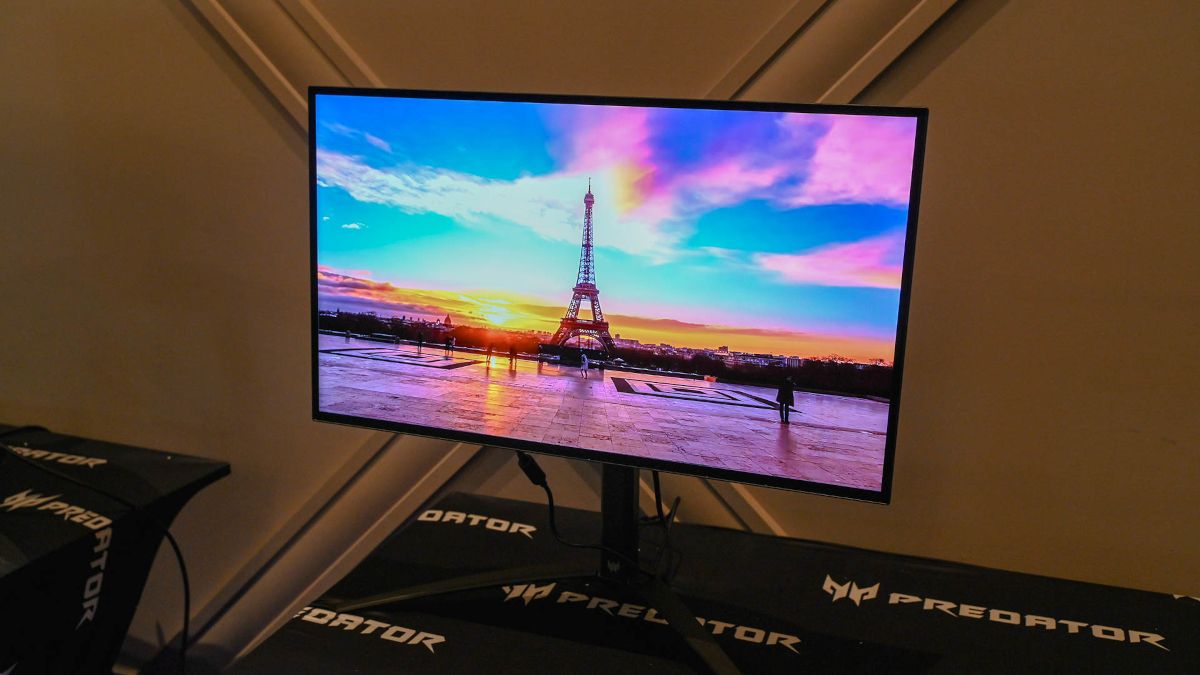Quick Links
Key Takeaways
Overclocking a PC monitor is like getting a free upgrade, but it has several significant drawbacks, such as image artifacts and potential hardware damage, that you need to accept before attempting it.
PC enthusiasts love making things go faster than the product manufacturer says it should, and there are clear benefits to overclocking, say, a CPU. You can also overclock a monitor, but it might not be obvious why anyone would do that.
What Does It Mean to "Overclock" a Monitor?
To overclock a monitor means to run the monitor's hardware at a faster speed than it was designed to run. This can be done by increasing the refresh rate or "clock speed" of the monitor, which can result in improved visual quality and performance, but, occasionally, with negative side effects.
How Monitor Overclocking Works
When it comes to the step-by-step details of monitor overclocking, there are a number of different tools and processes people use to get the job done. While we won't get into the specifics here, the process usually looks something like this:
- Research whether your monitor can be overclocked in the first place.
- Use the official GPU utility for your graphics card, or a third-party app to access refresh rates your operating system won't display as an option.
- Specify a custom resolution and an incrementally higher refresh rate.
- Test whether the monitor accepts the higher refresh rate.
- Check whether the monitor behaves normally with the faster refresh rate.
- Repeat the process until you're happy or the monitor rejects the refresh rate.
For detailed instructions, look for a reputable monitor overclocking guide.
The Benefits of Overclocking Your Monitor
The main benefit of overclocking your monitor is that it can improve the visual quality and performance of the monitor. By increasing the refresh rate, the monitor can display images more quickly and smoothly, resulting in reduced motion blur and improved overall clarity. Basically, the same benefits you get from buying a monitor rated for the refresh rate you're getting for free by overclocking.
This can be especially beneficial for gaming, where a higher refresh rate can result in a more immersive and responsive experience and makes higher frame rates possible.
The Downsides and Risks of Overclocking Your Monitor
The biggest downside of overclocking your monitor is that it can put additional strain on the hardware, potentially leading to damage or failure.
Overclocking can generate heat and can cause the hardware to run at higher temperatures than it was designed for, which can reduce its lifespan and potentially lead to permanent damage.
Overclocking can also void the warranty on your monitor, so if anything goes wrong, you won't be able to get it repaired or replaced for free. Additionally, not all monitors can be overclocked, and attempting to overclock a monitor that is not designed for it can result in damage or failure, so you always do so at your own risk!
When Is It Worth Overclocking Your Monitor?
Whether or not it's worth overclocking your monitor depends on your individual needs and risk tolerance. If you are a gamer or someone who values high refresh rates and smooth visuals, overclocking your monitor can provide some benefits.
However, it is important to carefully research and understand the potential risks and drawbacks before attempting to overclock your monitor. If you are not comfortable with the risks or do not have the knowledge and experience to properly overclock your monitor, it's probably not worth it. Especially if the overclock is relatively small compared to the factory refresh rate of the monitor.
Tips for Safely Overclocking Your Monitor
If you're keen to overclock your monitor, keep these general tips in mind:
- Always use a reputable overclocking tool or software to make the necessary adjustments to your monitor's settings. This will help ensure that the changes are made correctly and safely.
- Start with small increments and test for stability. Don't try to overclock your monitor to its maximum limits right away. Instead, start with small increases and test the monitor for stability and performance. If it seems stable and is performing well, you can try increasing the clock speed or refresh rate further.
- Overclocking can generate heat, so it is important to monitor the temperature of your monitor's hardware to ensure it's not overheating. If the temperature gets too high, you may need to reduce the clock speed or refresh rate to prevent damage.
- Keep an eye out for visual artifacts, such as smearing, ghosting, haloing around objects, etc. If your picture doesn't look how it's supposed to, you're probably pushing it too hard.
- Research how successful others have been when attempting to overclock your specific monitor model. It's best to learn from other people's mistakes, lest you repeat them yourself!
Think about whether the potential increase in refresh rate is worth the risk. Monitor overclocking makes the most sense with monitors that run at 60Hz, where even a small bump to (for example) 75Hz will result in perceptible improvements in responsiveness and smoothness. On the other hand, overclocking your 144Hz monitor by 25hz isn't worth it, and it's highly unlikely you'll tell the difference.
It's a good idea to play with and without the overclock to see if it makes any difference and you may even ask a friend to toggle the settings for you so that you don't know which is the overclocked experience.

